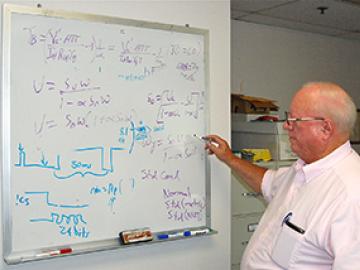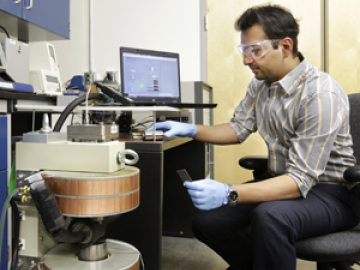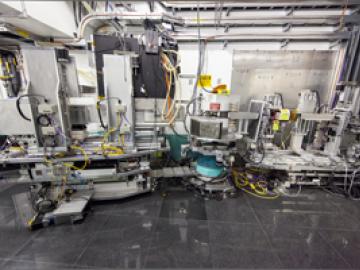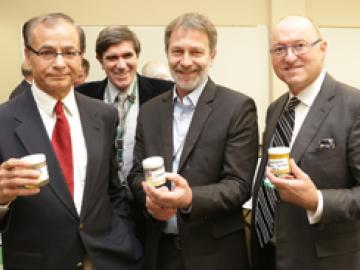Filter News
Area of Research
- (-) Clean Energy (19)
- (-) Neutron Science (6)
- Advanced Manufacturing (3)
- Biological Systems (3)
- Biology and Soft Matter (3)
- Building Technologies (3)
- Chemical and Engineering Materials (2)
- Chemistry and Physics at Interfaces (5)
- Climate and Environmental Systems (4)
- Computational Biology (1)
- Computational Chemistry (4)
- Computational Engineering (1)
- Computer Science (1)
- Earth Sciences (1)
- Energy Frontier Research Centers (6)
- Fuel Cycle Science and Technology (1)
- Functional Materials for Energy (8)
- Geographic Information Science and Technology (1)
- Materials (31)
- Materials for Computing (7)
- Materials Synthesis from Atoms to Systems (8)
- Materials Under Extremes (5)
- Neutron Data Analysis and Visualization (2)
- Nuclear Science and Technology (5)
- Nuclear Systems Technology (1)
- Quantum Condensed Matter (2)
- Renewable Energy (1)
- Sensors and Controls (1)
- Supercomputing (15)
- Transportation Systems (3)
News Topics
Media Contacts

In the early 1980s, the Department of Energy’s Oak Ridge National Laboratory was just beginning to explore transfer of technology from the lab to industry. Now it's the norm, and one historical example illustrates the long-term benefits.

Neutron scattering research at the Department of Energy’s Oak Ridge National Laboratory has revealed clear structural differences in the normal and pathological forms of a protein involved in Huntington’s disease.

The Spallation Neutron Source at the Department of Energy’s Oak Ridge National Laboratory broke records for sustained beam power level as well as for integrated energy and target lifetime in the month of June.

The American Conference on Neutron Scattering returned to Knoxville this week, 12 years after its inaugural meeting there in 2002.

Not much has changed in refrigeration technology in the past 100 years, until now. Researchers with Oak Ridge National Laboratory’s Building Technologies Program have partnered with General Electric (GE) Appliances through a cooperative research and development agreement (CRADA) to revolutionize home refrigerators using magnetocaloric cooling.

KNOXVILLE— Philip Enquist, partner in charge of urban design and planning and leader of the City Design Practice at Skidmore, Owings and Merrill, has been named the 16th University of Tennessee-Oak Ridge National Laboratory Governor's Chair. Skidmore, Owings and Merrill is one of the world's leading...

Thomas Wilbanks and Benjamin Preston, both of the Climate Change Science Institute (CCSI) at Oak Ridge National Laboratory (ORNL), are among the 309 coordinating lead authors of the Intergovernmental Panel on Climate Change’s (IPCC’s) Working Group II (WG II) report.

Carbon dioxide in the atmosphere may get the lion’s share of attention in climate change discussions, but the biggest repository of carbon is actually underfoot: soils store an estimated 2.5 trillion tons of carbon in the form of organic matter.

Vertimass LLC, a California-based start-up company, has licensed an Oak Ridge National Laboratory technology that directly converts ethanol into a hydrocarbon blend-stock for use in transportation fuels.

Photovoltaic spray paint could coat the windows and walls of the future if scientists are successful in developing low-cost, flexible solar cells based on organic polymers. Scientists at the Department of Energy’s Oak Ridge National Laboratory recently discovered an unanticipated factor in the performance of polymer-based solar devices that gives new insight on how these materials form and function.




